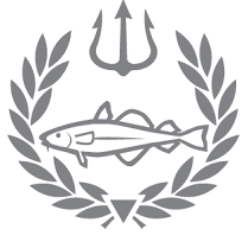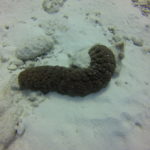While in Bonaire, I was able to log a total of nine incredible dives, bringing my dive log up to its one hundred and fourth page. A few things are rather predictable in Bonaire: warm water (typically in the low 80s), great visibility, lots of tropical fish, and lively, spirited divers. Yet amidst these known factors, each and every dive in Bonaire had something unique or unexpected to offer.
My first dive in Bonaire was a shore dive on the house reef of our dive resort, Buddy Dive. After splashing down into the water, I opened my eyes and saw what was the largest tarpon I have ever seen in my life. It was staring me down face to face as if it were waiting for an afternoon snack. I couldn’t believe my eyes. This dive was a great start to the trip, and I saw lots of other interesting fish along the way, including my favorite, a rock beauty!
The following morning, I completed two boat dives with one of the two adult boats operating that week. I enjoyed practicing my photography skills on these dives to document both the wildlife I was seeing and the parents in action. Upon our initial descent, we spotted two young hawksbill turtles. They must have been intimidated by our group, for they quickly swam off into the blue.
One of my favorite dives on this trip was the night dive I participated in with a Dive Buddy guide and two of the other interns affiliated with Kids Sea Camp. It was really amazing exploring the house reef at a later hour. While taking Sea Rover George Buckley’s Sustainable Ocean Environments course through the Harvard Extension School, I heard about about all the time he has spent in Bonaire and how he enjoys visiting the same dive site at different times during the day (and night). I’m glad that I got to experience exactly what George was discussing for myself in the same location! It was fun observing bioluminescent microorganisms in the water column and the variations in fish behavior between night and day. Luckily for us, the tarpon returned; and luckily for them, we helped them find dinner. By shining our dive lights on fish, the tarpon can easily seek out prey at night. Instead of hunting during the day, the tarpon have actually altered their eating habits due to the aid of local night divers. Hunting at night gives the tarpon an advantage over their prey. It was really impressive, yet sad to see a tarpon attack a small fish in the beam of my dive light.
I also really enjoyed diving on the Hilma Hooker. The Hilma Hooker was a trade ship which, while docked at Bonaire, was discovered to be hauling over 20,000 pounds of marijuana in a false bulkhead. With the crew and captain detained, the Hilma Hooker soon fell into disrepair and was finally sunk off the coast of Bonaire – now a wonderful dive site! The wreck rests in about 80 feet of water and was very fun to explore. Upon the ship’s hull, many damselfish have laid eggs. As we swam past their nests, the damselfish did everything in their power to defend the eggs. They are quite some aggressive fish. My parents dove The Hooker before I was even born and often tell me about the upside down toilets in the wreck. It was great to compare notes with them about this interesting dive spot.
The final non-course-related dive I completed was on our final day in Bonaire at Noname Beach. This dive was relaxing and rather shallow. There was lots to see here, but the best part about this dive was that parents could go diving with their recently certified children. It was great to see so many families in the water, connecting by the sport of scuba diving. I could relate well to this feeling, for my parents were the ones who introduced scuba to me. It’s great to have an organization like Kids Sea Camp making these connections possible!




